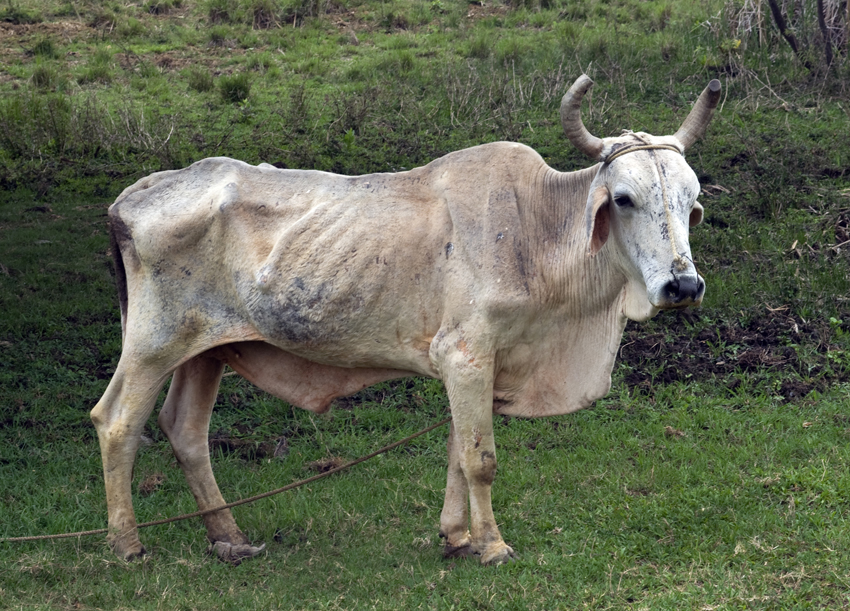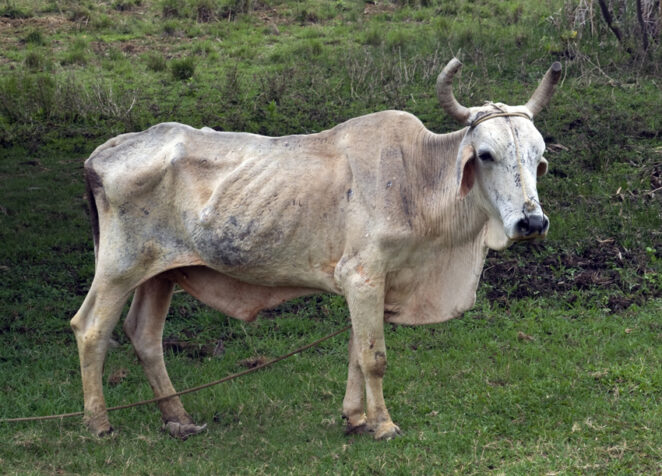Case-study /
Sustainable livestock production in Cuba


A bullock in Camugüey, Cuba. © Carol Foil / flickr.com / creative commons
Camagüey province is the driest region of Cuba, and the impacts of climate change are making it drier. This area will most likely experience recurrent drought, which is forcing agricultural and livestock farmers to change their practices. CARE developed this project together with the Cuban Association of Livestock Production (ACPA) and the Meteorological Society of Cuba to help Camagüey livestock farming communities adapt to the changing climate.
The project identified three main objectives:
- Create risk reduction strategies for livestock producer cooperatives through a tailored climate forecasting system.
- Build the capacity of cooperative members in order to improve their assessment of risk and knowledge of potential adaptation activities that are appropriate for the local (dry) soil conditions.
- Improve community access to climate information and vulnerability assessments in order to improve the cooperative’s ability to adapt to a changing climate and ensure that their livestock production is sustainable in the long term.
Disaster risk reduction strategies to reduce the impact of hazards on vulnerable households
The project carried out a vulnerability assessment using CARE’s Community Vulnerability and Capacity Assessment (CVCA) tool. This enabled the project team, together with partners, to define priority interventions as well as to draft a disaster risk reduction (DRR) plan for each of the eight livestock cooperatives in the Camagüey province. The project helped to finance up-to-date meteorological instruments for the Provincial Meteorological Centre, also used by the technicians of the cooperatives, to better manage climate forecasts and understand agro-meteorological applications. Members were then trained in the use of a monitoring and early warning system for drought.
Promotion of climate-resilient livelihoods strategies
The project has used two main strategies to promote resilient livelihood practices and build the adaptive capacity of the livestock farming communities. These are:
1. The promotion of climate-appropriate systems that impact more positively on the environment:
- sustainable agroforestry systems established at the eight participating cooperatives
- the creation of forest tree nurseries, for reforestation, and fruit tree cultivation to diversify fodder and income sources
- the establishment of fodder banks, to avoid waste in livestock feed
- rationed water-consumption, and the promotion of water-saving technologies, wells and rainwater harvesting techniques
- creating a source of renewable energy through the installation of windmills
- improving soil structure and fertility through the application of bio-fertilisers (and vermicomposting).
2. Increased production and income generation:
- increasing yields through the introduction of new management methods
- these management methods encouraged women’s leadership and improved working conditions for women employees by providing fuel-efficient and safe stoves for households and women-only toilets at each cooperative
- better management of cattle to reduce heat stress in animals (a main cause of productivity loss).
- fencing to protect crops from animal intrusion
- diversification of livelihood activities, including small-animal husbandry (rabbits, sheep, goats, poultry) primarily carried out by women in the homestead.
Capacity development for local civil society and government institutions
Cooperative members, local partners and government representatives were trained in weather monitoring and sustainable livestock production techniques. Four workshops were organised to reflect on the vulnerability analysis process (using CARE’s CVCA tool) and to train local partners in adaptation activities and techniques. A workshop with the Meteorological Institute trained cooperative staff in agro-meteorological monitoring, meaning that staff cooperatives now manage local weather stations, and the provincial meteorological centre manages climate information, which now allows weather modelling predictions to be provided on a much more local scale.
Advocacy and social mobilisation to address the underlying causes of vulnerability
The recognition that gender inequality limits the sustainability and efficiency of livestock production, particularly in relation to cooperative membership and leadership, and the formal acknowledgement of women’s roles in livestock and fodder production, enabled the communities to discuss labour division and women’s empowerment activities as part of building community adaptive capacity.
